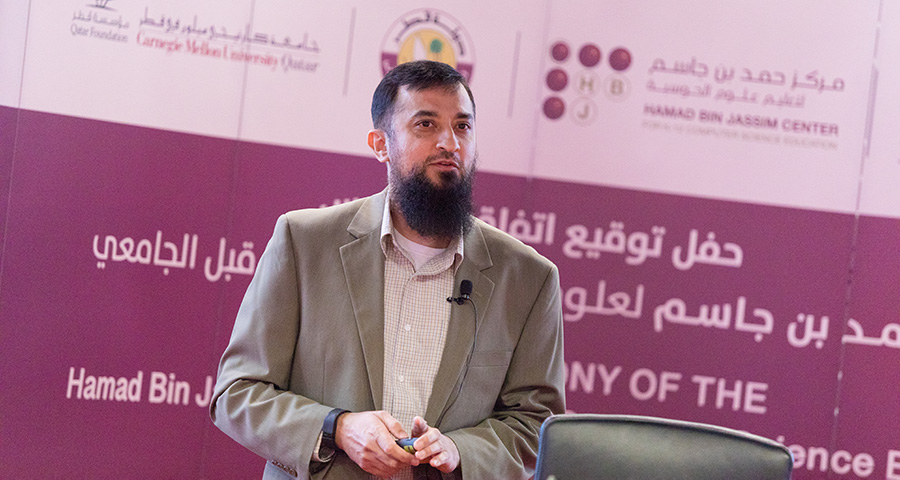
Carnegie Mellon team creates three-year computer science curriculum
New curriculum is piloted in seven Qatar schools
A team of researchers at Carnegie Mellon University in Qatar (CMU-Q), a Qatar Foundation partner university, has created a three-year computer science curriculum for middle school students to prepare students for higher level classes in computer science. The project was funded by a Qatar National Research Fund (QNRF) grant from the National Priorities Research Program.
The new curriculum is being piloted in seven Qatar schools this year, as well as schools in Pakistan and the United States. The team has already trained more than 200 teachers, who are teaching the new curriculum to more than 20,000 students in total.
Saquib Razak, lead principal investigator on the project and the associate area head of computer science at CMU-Q, has been working for more than a decade on developing tools for computer science education in Qatar. He and his team began by adapting the Alice software to help students in the Middle East learn the concepts of programming.
For the new curriculum, Razak has expanded on the one-year Alice curriculum, providing a deeper understanding of computer science principles.
“We built the new curriculum with the kids in mind. This generation has grown up with computers, tablets and smartphones, so they are used to having instant feedback. We incorporated different visual elements so they can see how computational thinking works,” said Razak.
The curriculum is designed for students in middle school, and covers the basics of computational thinking through to advanced, text-based programming in Python.
“While students can take the curriculum in its entirety, we also built it in modules. Students with a particular interest in intensive programming, for example, can do the programming modules from each year to get an in-depth understanding of that topic,” said Razak.
The Alice educational software was originally developed at Carnegie Mellon’s main campus. Razak’s team built a curriculum based on Alice in English and Arabic, with support from a QNRF grant. Support for Alice, including teacher’s training, student workshops, and programming competitions is provided by the Hamad Bin Jassim Center for K-12 Computer Science Education, a collaboration between CMU-Q and the Jassim and Hamad Bin Jassim Charitable Foundation.
Looking ahead, Razak and his research team are looking to further develop the Alice software. Razak was appointed director of curriculum of the Alice project on main campus and looks forward to incorporating technology like virtual reality into the way students learn computer science.
“This is a prime time to introduce new ways of learning computer science into schools. We are more connected than we were a few years ago, and this means we can reach more students in more engaging ways,” said Razak.
